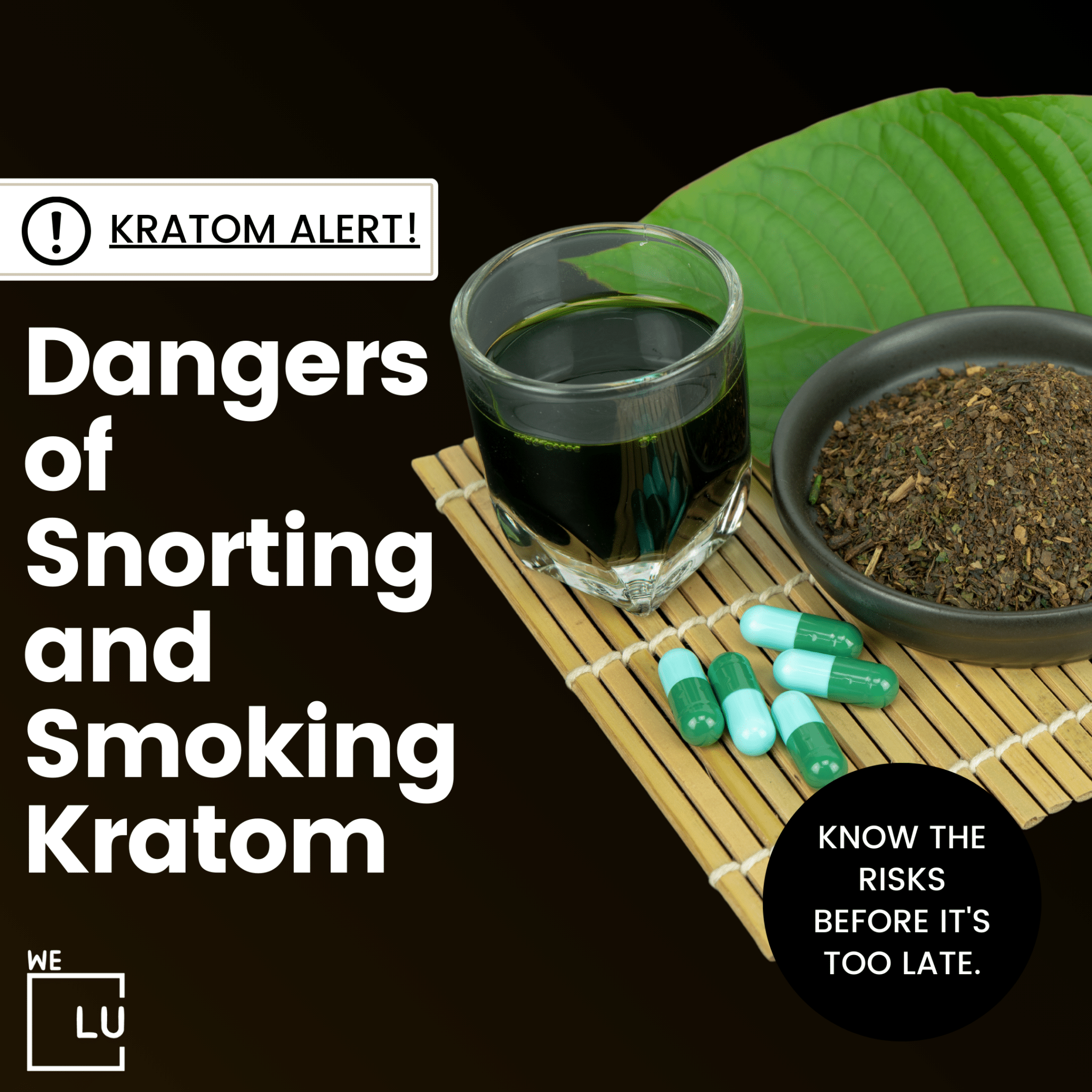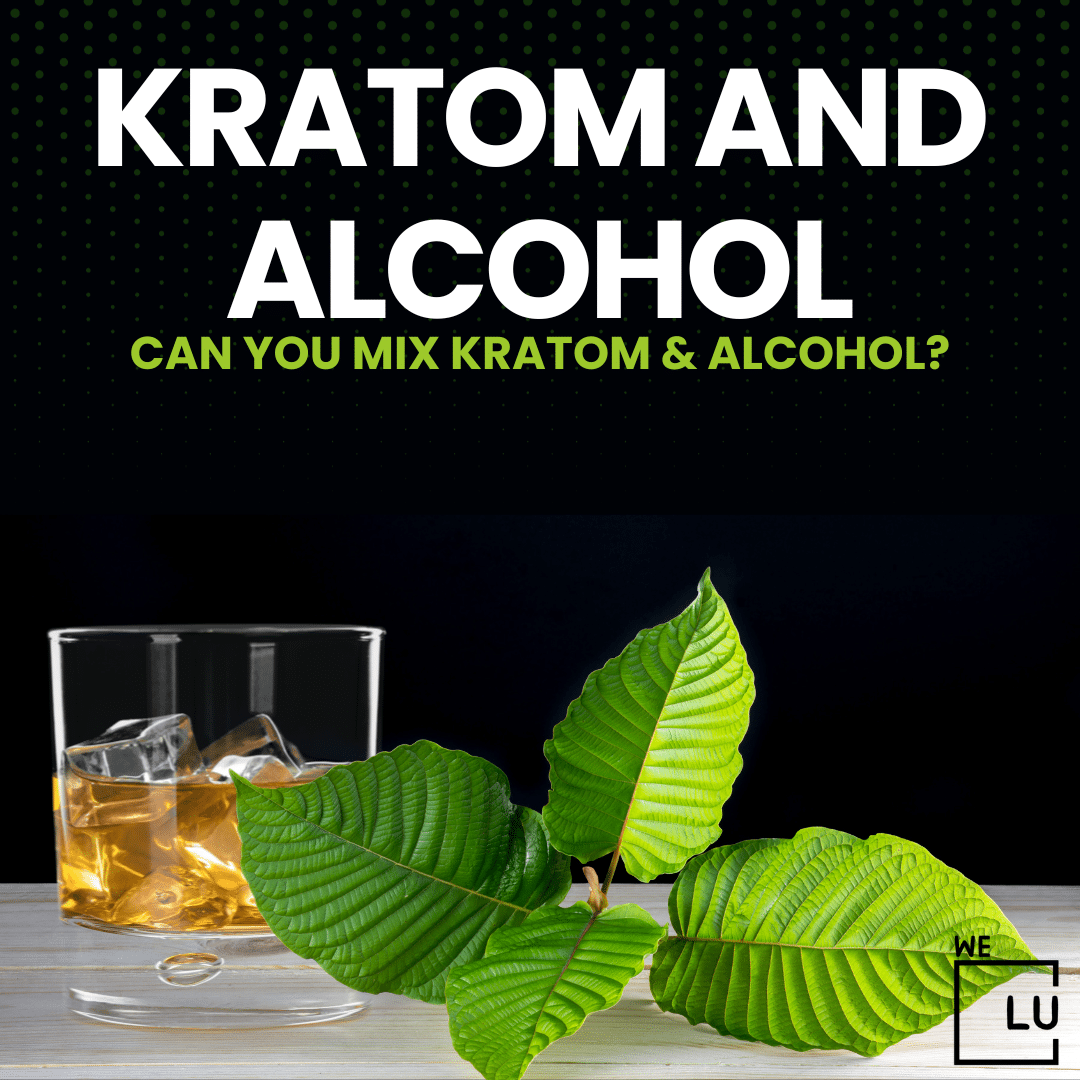What Is A Lethal Dose Of Fentanyl?
Trying to figure out the lethal dose of any substance, including Fentanyl, can be difficult. Various factors influence individual responses to the drug. Fentanyl is a highly potent synthetic opioid used for pain management, but its misuse or accidental overdose can be life-threatening.
Several factors contribute to the difficulty in pinpointing a specific lethal dose:
- Individual Variability: People’s drug responses vary widely due to age, weight, overall health, tolerance, and genetic differences. What might be a lethal dose for one person may not be the same for another.
- Tolerance: Individuals who have been using opioids, including Fentanyl, regularly may develop tolerance, meaning they need higher doses to achieve the same effect. This increased tolerance can make it challenging to define a universally lethal dose.
- Polydrug Use: Many cases of overdose involve the simultaneous use of multiple substances, including opioids, benzodiazepines, or alcohol. The combination of these substances can significantly increase the risk of adverse effects and make it harder to determine a specific lethal dose for one substance alone.
- Variable Drug Purity: Illicitly obtained drugs, including Fentanyl, may vary in purity, leading to unpredictable effects. In some cases, individuals may unknowingly consume a higher concentration of the drug than they anticipated, increasing the risk of overdose.
- Rapid Onset and Potency: Fentanyl is known for its rapid onset and high potency. Even small amounts of the drug can lead to respiratory depression, which is the primary cause of death in opioid overdoses.
Given these factors, make sure to approach substances like Fentanyl with extreme caution. Misuse or accidental exposure can lead to severe health consequences, including overdose and death. If you have concerns or questions about opioids or any other medications, consult with a healthcare professional for accurate and personalized information based on your specific circumstances. If you suspect an overdose, seek immediate medical attention or contact emergency services.
If you or someone you care about is facing Fentanyl abuse, don’t face it alone. We Level Up is here to support you on your journey to recovery. Your call is free and confidential.
Why Is Fentanyl Dangerous?
Fentanyl is considered dangerous due to its potency, rapid onset of action, and the risk of overdose, which can lead to serious health consequences, including death. Here are several reasons why Fentanyl is considered particularly hazardous:
- Potency: Fentanyl is a highly potent opioid, estimated to be 50 to 100 times more potent than morphine and about 50 times more potent than heroin. Even a small amount of Fentanyl can have a powerful effect on the central nervous system, leading to respiratory depression and other life-threatening complications.
- Rapid Onset of Action: Fentanyl acts quickly in the body, leading to the rapid onset of its effects. This quick action can increase the risk of overdose, especially if individuals are not aware of the potency of the drug or if they miscalculate their dose.
- Respiratory Depression: One of the most significant dangers associated with opioids, including Fentanyl, is respiratory depression. Opioids can suppress the respiratory system, leading to slowed or shallow breathing. In an overdose situation, this can progress to respiratory arrest, where breathing stops altogether.
- Risk of Accidental Exposure: Fentanyl is used medically for pain management, typically in the form of patches, injections, or tablets. However, illicitly manufactured Fentanyl may be mixed with other drugs, increasing the risk of accidental exposure. First responders, law enforcement, and healthcare professionals are particularly at risk when handling substances containing Fentanyl.
- Illicit Production and Distribution: Illicitly produced and distributed Fentanyl may come in various forms, including powders, tablets, or patches. The lack of quality control in these illegal operations can result in inconsistent drug concentrations, increasing the risk of overdose.
- Tolerance and Dependence: Prolonged use of opioids, including Fentanyl, can lead to the development of tolerance, requiring higher doses to achieve the same effects. This increased tolerance can contribute to the risk of overdose, especially if individuals continue to escalate their dose.
- Polydrug Use: The combination of Fentanyl with other substances, such as benzodiazepines or alcohol, can potentiate the depressant effects on the central nervous system, increasing the risk of overdose.
Given these risks, it is crucial for individuals to use Fentanyl only under the supervision of a qualified healthcare professional and to be aware of the potential dangers associated with its use. Misuse, accidental exposure, or the use of illicitly obtained Fentanyl can have severe consequences, and individuals should seek help from healthcare providers if they have concerns about opioid use or if they suspect an overdose.
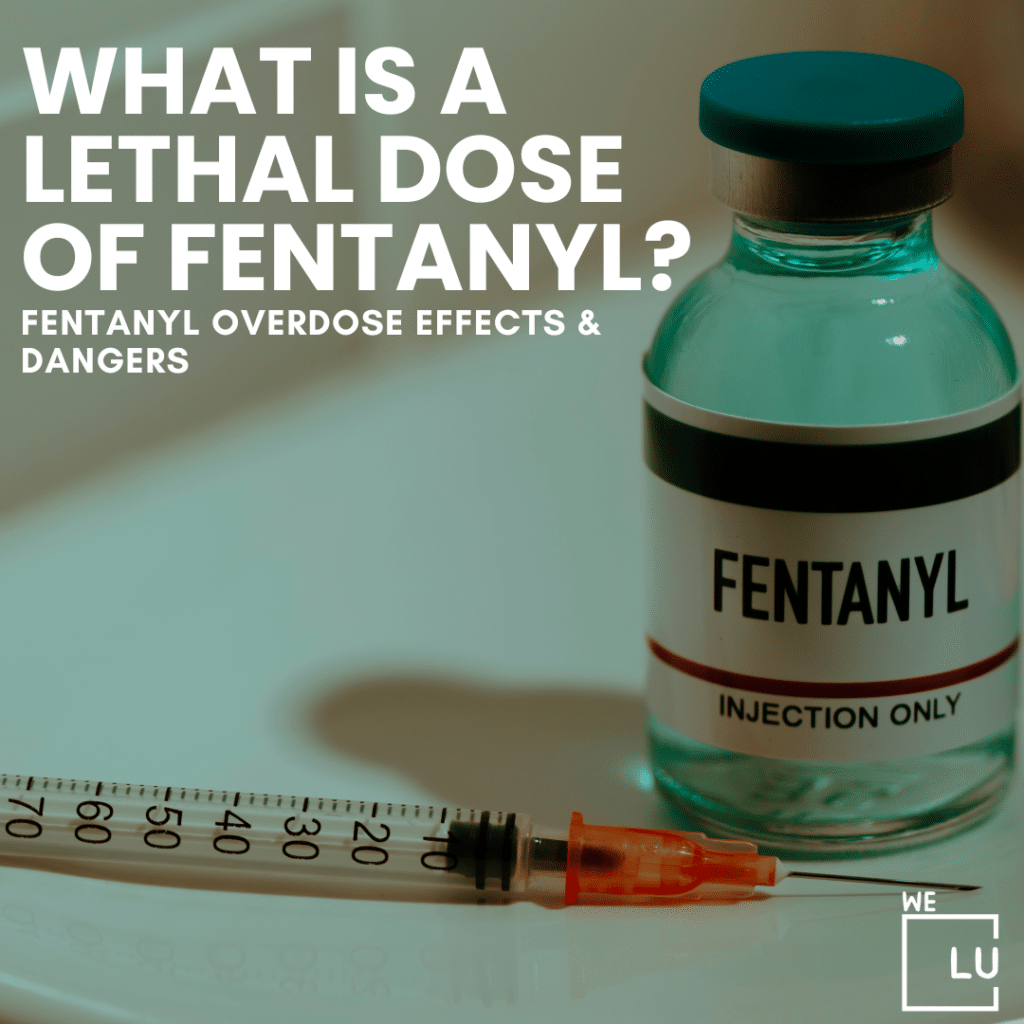
Skip To:
Learn More:
- Why Is Fentanyl So Dangerous? What is Fentanyl, Effect & Use
- How Long Does Fentanyl Stay In Urine? Fentanyl Urine Testing and Half-life.
- Fentanyl Withdrawal, Timeline, Symptoms, Dangers, Medical Detox & Addiction
- How long does fentanyl stay in your system? Addiction, Drug Tests, Overdose & Treatment
- Fentanyl Overdose Symptoms, What Is Fentanyl? & Treatment
- Fentanyl Drug Addiction Treatment, Effects & Overdose

Get Your Life Back
Find Hope & Recovery. Get Safe Comfortable Detox, Addiction Rehab & Dual Diagnosis High-Quality Care.
Hotline (855) 695-1160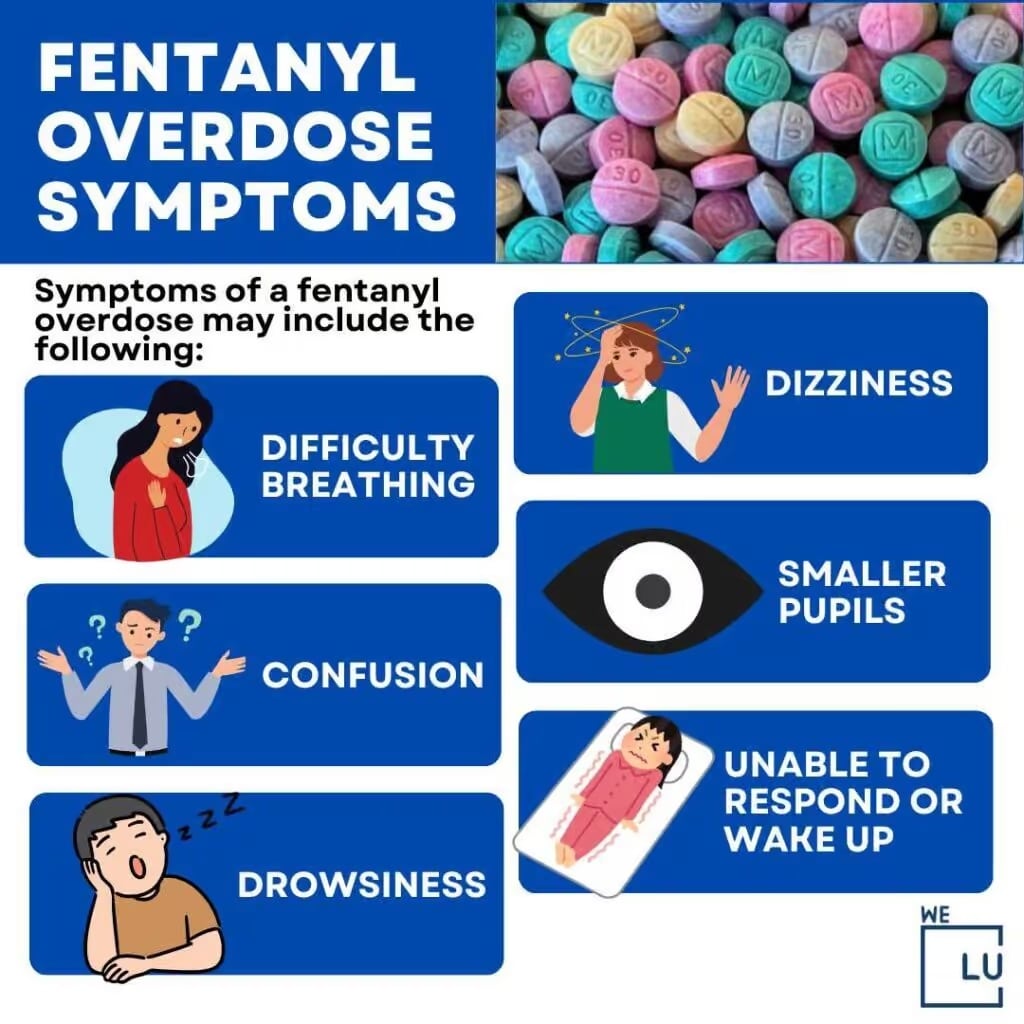
Fentanyl Overdose
A Fentanyl overdose occurs when someone takes more of the drug than their body can handle, leading to life-threatening symptoms. Fentanyl is a powerful opioid, and an overdose can result in severe respiratory depression, which is the primary cause of death in opioid overdoses. Here are some signs and symptoms of a Fentanyl overdose:
- Respiratory Depression: This is a critical and potentially fatal symptom of a Fentanyl overdose. Shallow or slow breathing, difficulty breathing, or complete cessation of breathing can occur.
- Drowsiness or Unconsciousness: Individuals experiencing a Fentanyl overdose may become extremely drowsy, confused, or lose consciousness.
- Pinpoint Pupils: Constricted or pinpoint pupils (miosis) are a common sign of opioid intoxication, including Fentanyl overdose.
- Cold, Clammy Skin: Skin that feels cold and clammy to the touch can indicate a decrease in blood flow and oxygenation.
- Weak Pulse: A weak or slow pulse may be present as a result of cardiovascular effects associated with Fentanyl overdose.
- Blue or Gray Lips and Fingernails: Cyanosis, or a bluish or grayish tint to the lips and fingernails, can indicate a lack of oxygen in the body.
- Vomiting: Nausea and vomiting are possible symptoms of opioid overdose, including Fentanyl.
How To Treat A Fentanyl Overdose
Treating a Fentanyl overdose requires prompt and decisive action. If you suspect someone is experiencing a Fentanyl overdose, follow these steps:
- Call Emergency Services: Dial emergency services immediately (e.g., 911 in the United States) to request professional medical assistance.
- Administer Naloxone (if available): If naloxone (Narcan) is accessible, administer it according to the provided instructions. Naloxone is an opioid receptor antagonist that can temporarily reverse the effects of a Fentanyl overdose. Follow up with emergency services even if naloxone is administered.
- Perform Rescue Breathing: If the person is not breathing or has shallow breathing, begin rescue breathing. Tilt their head back, lift the chin, and provide one breath every 5-6 seconds while awaiting professional help.
- Stay with the Person: Do not leave the person alone. Monitor their breathing and other vital signs closely.
- Provide Support: Keep the person comfortable and reassure them. Stay calm and try to keep them calm as well.
- Follow Emergency Services’ Guidance: Emergency personnel will provide instructions over the phone until they arrive. Cooperate with their guidance and provide any relevant information about the situation.
- Seek Professional Medical Attention: Even if the person appears to recover after naloxone administration, seek immediate medical attention. Fentanyl’s effects can outlast the naloxone, and professional medical evaluation is essential.
Remember that time is critical in the case of a Fentanyl overdose, and immediate action can be lifesaving. Time is of the essence, and delaying medical help can lead to severe consequences, including death. Call emergency services (911 in the United States) and provide any information about the situation. If you or someone you know is struggling with opioid use, seek assistance from healthcare providers or addiction specialists for support and treatment options.
In some regions, naloxone (Narcan), an opioid receptor antagonist, is available and can be administered to reverse the effects of opioid overdose temporarily. Naloxone is a life-saving medication that bystanders or first responders can administer until professional medical help arrives.
Naloxone is not a substitute for emergency medical care, and anyone who has received naloxone should still seek immediate medical attention. Additionally, the availability and regulations surrounding naloxone may vary by location.
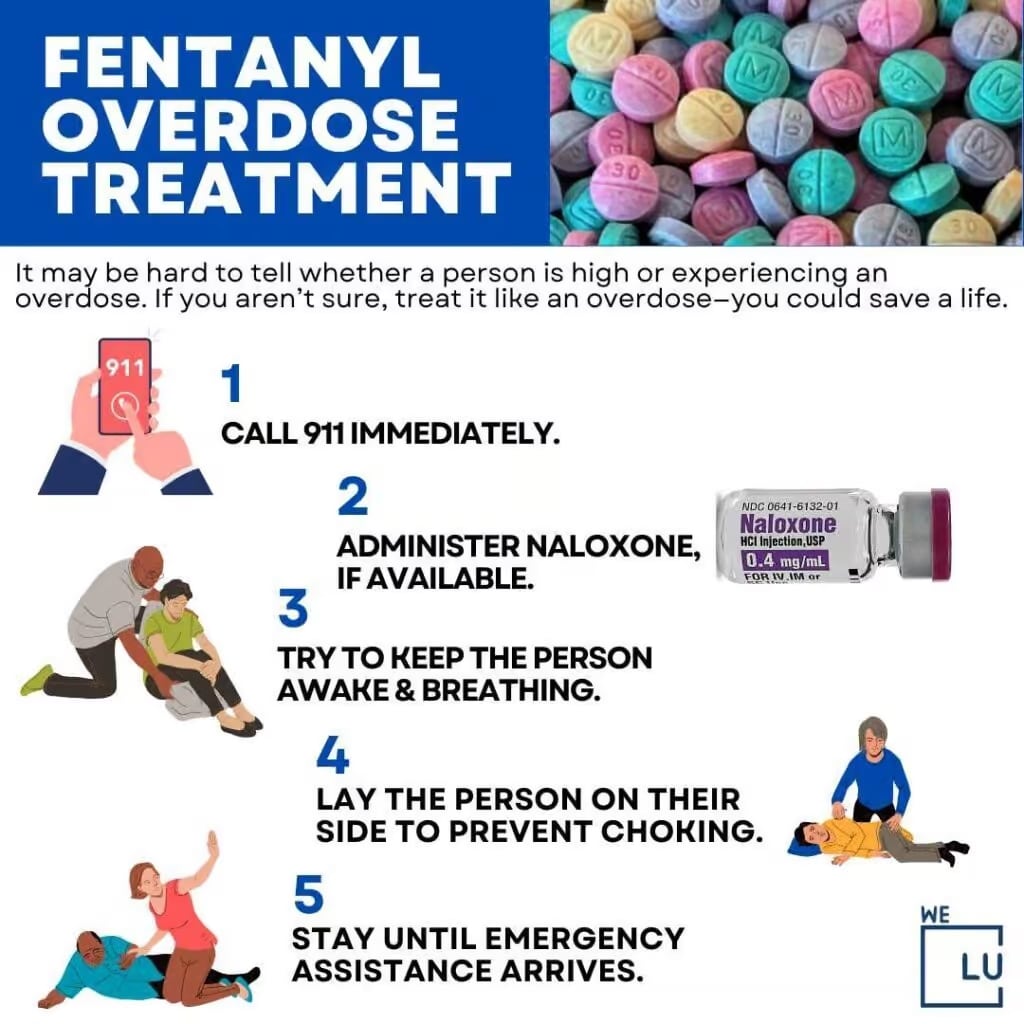
Get Help. Get Better. Get Your Life Back.
Searching for an Accredited Drug and Alcohol Rehab Centers in Near You?
Even if you have failed previously and relapsed, or are in the middle of a difficult crisis, we stand ready to support you. Our trusted behavioral health specialists will not give up on you. When you feel ready or just want someone to speak to about therapy alternatives to change your life call us. Even if we cannot assist you, we will lead you to wherever you can get support. There is no obligation. Call our hotline today.
FREE Addiction Hotline – Call 24/7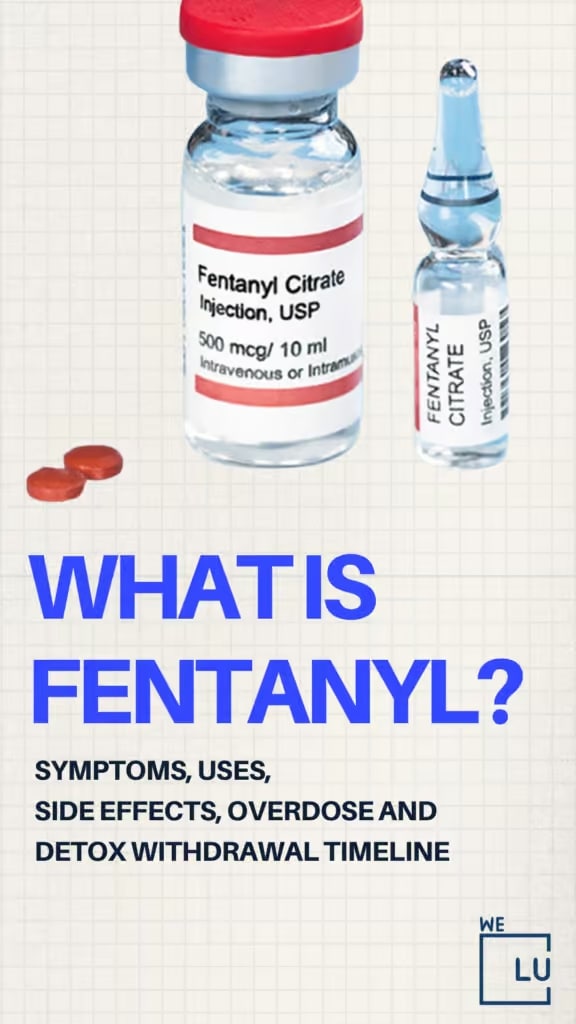
What Is Fentanyl?
Fentanyl is a powerful synthetic opioid medication that is used medically for pain management. It belongs to the class of drugs known as opioids, which also includes substances like morphine and heroin. Fentanyl is significantly more potent than many other opioids, making it a valuable tool in the treatment of severe pain, especially in situations where other medications may not provide sufficient relief.
Critical aspects of Fentanyl include:
- Potency: Fentanyl is estimated to be 50 to 100 times more potent than morphine and about 50 times more potent than heroin. This high potency allows for the administration of smaller doses to achieve the desired pain-relieving effects.
- Medical Uses: In a medical setting, Fentanyl is commonly used to manage pain during surgical procedures, for postoperative pain control, and for the treatment of severe or chronic pain in opioid-tolerant patients. It is available in various forms, including patches, injections, tablets, and intravenous formulations.
- Transdermal Patches: One of the unique aspects of Fentanyl is its availability in transdermal patches, which are designed to release the medication slowly through the skin over an extended period. These patches are often prescribed for chronic pain management, providing a controlled and continuous release of the drug.
- Risk of Misuse and Addiction: While Fentanyl has therapeutic benefits when used appropriately under medical supervision, it also poses a significant risk of misuse, dependence, and addiction. Illicitly manufactured Fentanyl, often mixed with other drugs, has become a significant contributor to opioid-related overdoses.
- Illicit Use: Illicitly produced Fentanyl has been a cause for concern, particularly in the context of the opioid epidemic. The drug may be sold on the black market, sometimes unknowingly mixed with other substances, leading to a higher risk of overdose.
- Side Effects: Like other opioids, Fentanyl can cause side effects, including drowsiness, confusion, nausea, constipation, and respiratory depression. The latter is a potentially life-threatening side effect that can lead to breathing difficulties or respiratory arrest.
- Lethal Dose and Overdose: Fentanyl overdose is a serious and potentially fatal condition. The drug’s high potency means that even a slight increase in dosage can lead to overdose, characterized by respiratory depression, unconsciousness, and, if not promptly addressed, death.
Due to the risks associated with Fentanyl, healthcare professionals must prescribe and monitor its use in medical settings carefully. Individuals prescribed Fentanyl should follow their healthcare provider’s instructions closely, and any concerns or adverse effects should be promptly reported. The illicit use of Fentanyl poses significant public health challenges, and efforts to address the opioid crisis include strategies to prevent misuse, improve access to treatment, and enhance public awareness of the risks associated with these potent medications.
First-class Facilities & Amenities
World-class High-Quality Addiction & Mental Health Rehabilitation Treatment
Rehab Centers TourRenowned California Addiction Center. Serene Private Facilities. Inpatient rehab programs vary.
Addiction Helpline (855) 695-1160Proven recovery success experience, backed by a Team w/ History of:
15+
Years of Unified Experience
100s
5-Star Reviews Across Our Centers
10K
Recovery Success Stories Across Our Network
- Low Patient to Therapist Ratio
- Onsite Medical Detox Center
- Comprehensive Dual-Diagnosis Treatment
- Complimentary Family & Alumni Programs
- Coaching, Recovery & Personal Development Events
Fentanyl Effects
The effects of Fentanyl can vary depending on factors such as the individual’s tolerance, the dosage administered, and the route of administration. Fentanyl primarily acts on the central nervous system, binding to opioid receptors in the brain and spinal cord. Here are some of the common effects associated with Fentanyl:
- Pain Relief: Fentanyl is primarily prescribed for its potent analgesic (pain-relieving) properties. It is often used to manage severe pain, such as that experienced during surgery, recovery from medical procedures, or in cases of chronic pain.
- Euphoria and Relaxation: Like other opioids, Fentanyl can induce a sense of euphoria and relaxation. This effect is one of the reasons why opioids, including Fentanyl, have a potential for misuse and addiction.
- Sedation: Fentanyl can cause drowsiness and sedation. Individuals using Fentanyl, particularly in a medical setting, may experience increased sleepiness or fatigue.
- Respiratory Depression: One of the most significant risks associated with Fentanyl is respiratory depression. The drug can slow down or suppress the respiratory system, leading to shallow or slowed breathing. In overdose situations, this can progress to respiratory arrest, a life-threatening condition where breathing stops altogether.
- Nausea and Vomiting: Opioids, including Fentanyl, can cause nausea and vomiting as side effects. This is a common reason why some individuals may not tolerate opioids well.
- Constipation: Opioids often cause constipation due to their effects on the gastrointestinal system. This side effect may require additional interventions, such as the use of laxatives or dietary changes.
- Pupillary Constriction: Fentanyl, like other opioids, can cause constriction of the pupils (miosis). This is often referred to as “pinpoint pupils.”
- Hypotension: Fentanyl can lower blood pressure, leading to hypotension. This effect may be more pronounced when the drug is administered rapidly or in high doses.
- Tolerance and Dependence: With prolonged use, individuals may develop tolerance to the effects of Fentanyl, requiring higher doses to achieve the same pain-relieving effects. Additionally, dependence can develop, leading to withdrawal symptoms if the drug is abruptly discontinued.
While Fentanyl has legitimate medical uses, its misuse, especially in the context of illicitly manufactured or obtained Fentanyl, can have severe consequences, including overdose and death. Illicitly produced Fentanyl, often mixed with other substances, has been a significant contributor to opioid-related overdoses, making it crucial for individuals to use Fentanyl only under the supervision of a qualified healthcare professional. If you have concerns about Fentanyl or its effects, make sure to discuss them with your healthcare provider.
World-class, Accredited, 5-Star Reviewed, Effective Addiction & Mental Health Programs. Complete Behavioral Health Inpatient Rehab, Detox plus Co-occuring Disorders Therapy.
CALL (855) 695-1160End the Addiction Pain. End the Emotional Rollercoaster. Get Your Life Back. Start Drug, Alcohol & Dual Diagnosis Mental Health Treatment Now. Get Free No-obligation Guidance by Substance Abuse Specialists Who Understand Addiction & Mental Health Recovery & Know How to Help.
Fentanyl Addiction
Fentanyl, like other opioids, has the potential to lead to addiction when misused or without proper medical supervision. Addiction is a chronic, relapsing disorder characterized by compulsive drug seeking, continued use despite harmful consequences, and long-lasting changes in the brain. Here are some key points related to Fentanyl addiction:
- High Potency and Addiction Risk: Fentanyl is significantly more potent than many other opioids, and this high potency contributes to an increased risk of addiction. Users may quickly develop tolerance, leading to the need for higher doses to achieve the same effects.
- Rapid Onset and Intensity of Effects: Fentanyl’s rapid onset of action and intense euphoria can make it particularly appealing to individuals seeking a powerful and immediate opioid experience. However, these characteristics also contribute to a heightened risk of addiction.
- Physical and Psychological Dependence: Prolonged use of Fentanyl can lead to physical dependence, where the body adapts to the presence of the drug and experiences withdrawal symptoms when it is not present. Psychological dependence can also develop, involving a strong desire or craving for the drug to feel pleasure or avoid discomfort.
- Withdrawal Symptoms: Withdrawal from Fentanyl and other opioids can be challenging and uncomfortable. Symptoms may include anxiety, irritability, insomnia, nausea, vomiting, diarrhea, muscle aches, and sweating. These symptoms can contribute to the cycle of addiction, as individuals may continue using the drug to avoid or alleviate withdrawal.
- Risk of Overdose: As individuals develop tolerance to Fentanyl, they may increase their dosage, increasing the risk of overdose. Fentanyl overdoses can be life-threatening, primarily due to respiratory depression, where breathing becomes dangerously slow or stops.
- Illicitly Manufactured Fentanyl: Illicitly manufactured Fentanyl, often mixed with other drugs, has become a significant concern in the opioid epidemic. Individuals purchasing drugs on the illicit market may be unknowingly exposed to highly potent and dangerous forms of Fentanyl, increasing the risk of overdose.
- Medical Supervision and Prescription Monitoring: It’s crucial for individuals prescribed Fentanyl for medical reasons to use it under the supervision of a qualified healthcare professional and to follow the prescribed dosage. Healthcare providers should carefully monitor patients for signs of misuse or dependence.
- Treatment Options: Addiction to Fentanyl, like other opioids, is a treatable condition. Treatment may include a combination of behavioral therapies, counseling, support groups, and, in some cases, medications to help manage withdrawal symptoms and cravings.
Experience Transformative Recovery at the We Level Up California Treatment Center.
See our authentic success stories. Get inspired. Get the help you deserve.



Start a New Life
Begin with a free call to an addiction & behavioral health treatment advisor. Learn more about our dual-diagnosis programs. The We Level Up treatment center network delivers recovery programs that vary by each treatment facility. Call to learn more.
- Personalized Care
- Caring Accountable Staff
- World-class Amenities
- Licensed & Accredited
- Renowned w/ 100s 5-Star Reviews
We’ll Call You
Joey’s Opiates Alcohol Drugs Addiction Recovery Story After Death of His Son at 26 From Fentanyl OD
Search Fentanyl Lethal Dose, Drug & Alcohol Rehab / Detox & Mental Health Topics & Resources
Sources
- Fentanyl DrugFacts – National Institute on Drug Abuse Related Article: Lethal dose Fentanyl, Fentanyl Lethal Dose, Fentanyl Dose, How Much Fentanyl Is Lethal, Fentanyl doses, Lethal Amount Of Fentanyl, Lethal Fentanyl dose, What Is The Lethal Dose Of Fentanyl.
- Fentanyl – U.S. Drug Enforcement Administration (DEA) (dea.gov) Related Article: Lethal dose Fentanyl, Fentanyl Lethal Dose, Fentanyl Dose, How Much Fentanyl Is Lethal, Fentanyl doses, Lethal Amount Of Fentanyl, Lethal Fentanyl dose, What Is The Lethal Dose Of Fentanyl.
- U.S. Drug Enforcement Administration. (2017). Drugs of Abuse: A DEA Resource Guide. Related Article: Lethal dose Fentanyl, Fentanyl Lethal Dose, Fentanyl Dose, How Much Fentanyl Is Lethal, Fentanyl doses, Lethal Amount Of Fentanyl, Lethal Fentanyl dose, What Is The Lethal Dose Of Fentanyl.
- Substance Abuse and Mental Health Services Administration. (2019). Key Substance Use and Mental Health Indicators in the United States: Results from the 2018 National Survey on Drug Use and Health.
- National Institute on Drug Abuse. (2016). Fentanyl.
- Drug Enforcement Administration. (2017). Drugs of Abuse.
- Department of Health and Human Services (HHS) – Opioid Crisis: https://www.hhs.gov/opioids/ Related Article: Lethal dose Fentanyl, Fentanyl Lethal Dose, Fentanyl Dose, How Much Fentanyl Is Lethal, Fentanyl doses, Lethal Amount Of Fentanyl, Lethal Fentanyl dose, What Is The Lethal Dose Of Fentanyl.
- NIDA. “Fentanyl DrugFacts.” National Institute on Drug Abuse, 1 Jun. 2021, https://nida.nih.gov/publications/drugfacts/fentanyl



